Estimated Fees in India
₹ 500 to ₹ 800 per hour
Find Maya 3D Animation Training Fees in your locality
Have experience of 9+years overall and currently working as Senior Animator in top leading MNC in India . Worked in international projects and clients like Kunfu Panda (Dreamworks) , Micky and minnie (Disney) , Spirit (Dreamworks), Amusmentpart (Nickelodeon) , Dinotrux (Dreamworks) etc. Its not about money, if you are passionate i will help you to be on top. Thank you.
When I was 10 years old everybody discover that I am a gifted artist because at a very early age of 10 I was doing clay modeling of indian goddess without taking any training. I was a famous boy in our village and near by area because of my art. I did that till my tenth grade then I joined B.K college of art and crafts, Bhubaneswar for my BFA degree in Applied art department. I competed that in 2008. Then I started my professional career. Since then i have never look back, My art has grown mature. I have worked for many educational Institution such as ZICA, Reliance Education and Arena as a 3d Faculty. I have got lots of love from my students from those institution. Then I have worked in game production as Game Artist at Lakshya Digital and Now I am working at Dhruva Interactive in Bangalore. Although I am working as an Artist, My passion for teaching 3d Modeling, Zbrush sculpting and texturing of game art is still LIVE. That's why I am teaching these current edge technology of creating character and prop assets for games (mobile, PC, PS4). Which we are using in production house today.
I am an experienced, qualified Senior 3D Trainer and tutor with over 10 years of experience in training Max, Maya, After effect, Zbrush, and Unity across different fields including Film industry, Gaming, VFx and 3D Architecture. Passionate about making 3d Short Films, Adds, over the years I have helped thousands of students overcome their fear of Animation and gaming. So far, I have worked as a 3D Trainer with Arena Animation, and Presently in Maac Souht Extension.
Post your Learning Need
Get customized quotes and responses from Tutors
Choose & Learn from Tutor of your choice

No data available
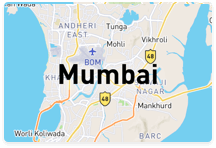
No data available
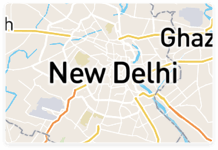
No data available
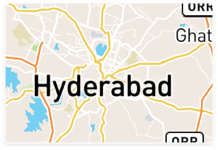
No data available
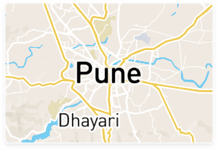
No data available
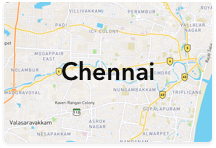
No data available
Answered on 30/06/2017 Learn IT Courses/Maya 3D Animation

Venkata Srikanth Kadali
MultiMedia Online Training
Answered on 07/05/2021 Learn Art and Creativity/Drawing/Intermediate

Prateek Bhardwaj
Learn 3D Animation Secrets from a 17-Year Pro Trainer (1,000+ Students Trained!)
Man, you must be overwhelmed by all the answers. I would recommend you do NOTHING BUT RESEARCH right now. Everyone has their own opinion, but you need to decide what you want to do and why. Now comes the most crucial part. WHY? Why do you want to do Animation or Graphics? Are you into Video games, Animes, Cartoons or VFX movies? Or did you hear from some friend or relative that Animation is good with Loads of money to be made? If it's the latter, forget about the whole thing. Animation takes a lot of time to learn and as much hard work as MCA or MBA or any discipline for that matter. And don't think of going to an institute for counselling as the counsellors some sales girls will show you footage of Bahubali or a Hollywood VFX movie and wash your mind and cost you lakhs. Trust me; I've been there, and so has many of my countless students. Research on your own and then make a decision. I hope it helps.
read lessLesson Posted on 02/06/2020 Learn IT Courses/Maya 3D Animation

Rankant
Rankant offers 3D animation course for both beginners to advance users to sharpen their skills as per...
Rule of Thirds
In this lesson, we will learn about the rule of thirds. Whether it's setting up a composition for a photograph or framing an actor on set, we always want to be sure that our final images are well-composed. One way we can achieve this is by using the rule of thirds. The rule of thirds is the process of looking at an image and imagining that that image is divided by two equally spaced horizontal lines and two equally-spaced vertical lines. These lines are where we want to place elements of importance. The areas where these lines intersect are hot spots, meaning these are the areas where our eye wants to look first. Let's take a look at this example. We can see in this image everything is framed in the centre. This makes for a less than interesting composition. Now let's see what happens if we frame the subject using the rule of thirds. We can see the composition of the image becomes more appealing and interesting to look at. The rule of thirds is also used to help frame characters on screen. If we take a look at this image, we can see that something is not quite right. The shot seems off balance. Now, let's reposition this shot using the rule of thirds. By simply aligning the eyes on the top third and positioning one at the intersection, the framing of our character looks more appealing and feels more natural. If you want to improve your composition and create more appealing shots, try using the rule of thirds to frame your scenes.
Headroom / Noseroom
In this lesson, we will learn about headroom and nose room. When shooting a scene, framing a character can be challenging. To help ensure accurate framing, we can look at the headroom and the nose room. Headroom is the space between the top of the subject's head and the top of the frame. When positioning for headroom, the rule of thirds can help. But sometimes breaking the law lets us tell more about a character with the camera. In this example, we can see the character has a significant amount of space above his head. This can create a psychological effect suggesting that the character is weak. By decreasing the character's headroom, we now feel as if he's stronger and more dominant. While most directors leave a little headroom, in general, the rule is the less headroom, the greater the strength. Nose room, often called the lead room, is the space in front of a moving or stationary subject. It helps to provide space for the subject's gaze and gestures. Often, an incorrect amount of space between the subject and the camera frame will make the subject look boxed in or that he's being pushed off the frame. Usually, if the subject is facing off-screen in profile, it's best to try and keep two-thirds of space between the subject and the frame. A person looking directly toward the camera will require less nose room than someone shot in full profile. The amount of nose room is dependent upon the angle of the subject facing the camera. So if you're trying to position your character in a scene, try looking at their head and nose room to help frame the shot.
F-stop
In this lesson, we'll learn about f-stops. This is also called the lens focal ratio or relative aperture. A camera lens's f-stop number refers to the amount the aperture or front opening of a lens can open or close. To take pictures faster we need our camera lens to allow in as much light as possible. You can see f-stops either shown as a lower case F, slash, and a number, like f/4, or as a ratio like 1:4. The f-stop is actually a ratio of the size of the front opening, or aperture, and the distance from the lens to your camera's sensor, or the focal length. So smaller f-stops mean the aperture is more open than a larger f-stop. Usually, a lens shows a single f-stop number like f/4. Now this means that the lens starts at f/4, and it's at its most open aperture. Higher quality lenses have lower f-stop numbers, meaning they can open much larger. Now, this does not mean the lens is stuck open at that f-stop. You can close your aperture, which will result in a higher f-stop number. The higher you set your f-stop, the less light that will enter the camera. Now, this results in longer shutter times to capture enough light for an image. This means a lens that can shoot at F over 1. 4 is much faster than a lens at f/4. Depth of field is another important consideration when choosing the f-stop to shoot at. A smaller f-stop, again meaning a larger opening, will create a shallow depth of field, where the object can be in focus, but the background is very blurry. If you want a longer depth of field so more objects are in focus, you can stop down your lens to a higher f-stop number. Photos shot at f/1. 4 and f/16 have a very different appearance. So setting the correct f-stop or aperture size is extremely important. You can tell the camera to set a specific aperture size or f-stop in either manual or aperture priority mode if your camera supports them. By understanding the f-stop system, we can take pictures faster and have a greater amount of control over the depth of field in our photographs.
ISO
In this lesson, we will discuss film speed and the important role this plays in both traditional and digital photography. Film speed is measured by using a numbering system called ISO, or the International Standards Organization. The ISO determines a film's sensitivity to light with lower ISO values signifying a lower sensitivity to light and higher ISO values being more sensitive to light. Because lower ISO film requires more light to capture an image, the camera shutter would normally need to stay open much longer to allow the necessary amount of light through. Now, this can result in blurred images if our camera is not perfectly stable while the shutter is open or if our subject is moving very quickly. Higher ISO film does allow for much faster shutter speeds and sharper images. But there's a significant drawback to using higher ISO values. The speed at which film emulsion reacts to light is related to the actual size of the light-sensitive grains in the actual film. Larger clumps react more quickly and have a larger grain size, so as you increase a film's sensitivity to light, you also increase the amount of random noise and graininess seen in the final image. ISO settings are present in digital cameras as well. But rather than controlling film sensitivity, we're actually adjusting the sensitivity of the camera's image sensor. In digital photography, we get almost exactly the same effect with higher ISO values than you would with the film. Increasing the sensitivity of the camera's image sensor produces a greater amount of sensor noise in the final image. As a general rule, it's recommended to shoot with the lowest possible ISO values that will yield an acceptable image of our subject. This will help to minimize the graininess and noise present in our final photographs.
Colour Temperature
In this lesson, we will learn about colour temperature. When you hear an artist speak about colour temperature, they're referring to the degree of warmth or coolness of one colour relative to another. Whether you're painting on a canvas or into a computer, it's important to understand colour temperature and how it affects not only your work but those who view it. Colour temperature has both perceptual and psychological ramifications. With regard to traditional artistic applications, colour temperature refers to a specific colour or hue's positioning on the colour wheel and how close that positioning is to either the hottest colour, which would be Red in full saturation or the coolest colour, which would be blue in full saturation. Before we dive further into colour temperature, it's important to understand that without light, there's no colour. In the real world, an object's colour can appear to change simply by altering the lighting used to illuminate the object. For example, the colour of the grass in your front yard at 11:00 AM may appear slightly different, albeit still green, then it would appear at 8:00 PM. With the sun almost directly overhead at 11:00, the sunlight illuminating your grass would be warmer as seen by its lower Kelvin rating. The Kelvin scale is a system used to measure the temperature of light. In contrast, at 8:00 PM, with the sun beginning to set, it will have a higher Kelvin rating, which in turn makes it cooler. The effective change you might see in the colour of your grass is it would go from a warmer green at midday to a cooler green in the evening. As an artist, it's important to be aware of the temperature of a light source since it controls the colours that we see. If a painting's colour temperature is inconsistent, it can feel out of tune. Also, intentional shifts in colour temperature can be included to call attention to certain areas of the composition. For example, using a splash of warm colour in a primarily cool composition will cause the warm elements to appear to advance. Likewise, cooler elements in a composition can appear to recede. Colour temperature can also have a psychological effect on intended viewers. Traditionally, warmer colours appear to be stronger, more vibrant, and full of energy, while cooler colours can be more restful, calming, and even cold or uncaring. When choosing a colour palette, make sure and pay close attention to the consistency of colour temperatures. And if you need to convey a message or evoke an emotion with your work, consider employing colour temperature as a means of communication.
Have a question about Maya 3D Animation Training Fees? Ask your question and get answers from top Tutors.
Create your FREE UrbanPro profile and grow your income!
Find best tutors for Maya 3D Animation Classes by posting a requirement.

Get started now, by booking a Free Demo Class